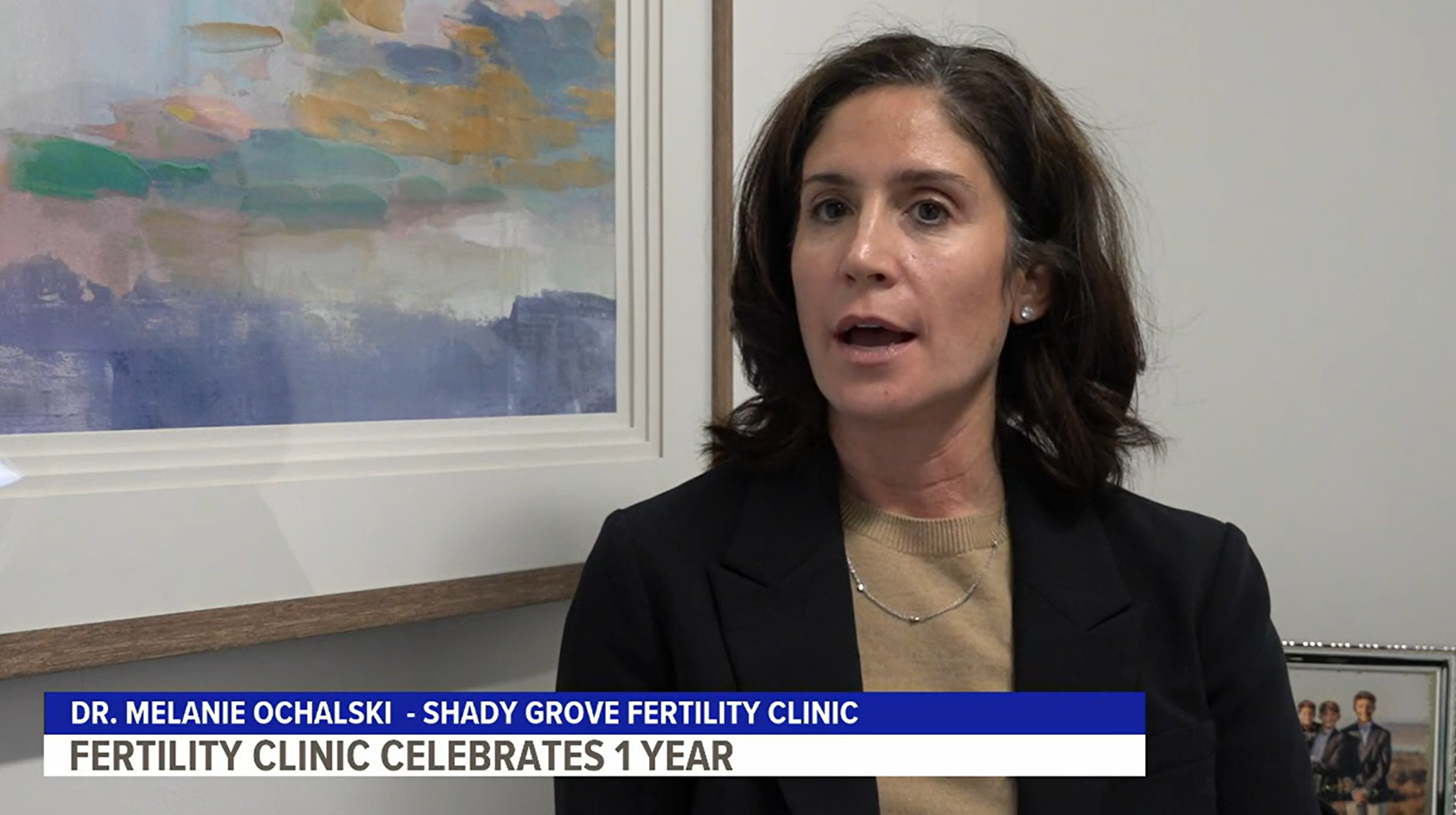
Once you’ve decided to start or grow your family, you want your new addition to happen quickly. When you’re waiting to welcome your new little one, even the 9 months of pregnancy itself can seem interminable, let alone the time spent beforehand trying to conceive.
You work that first month to get pregnant, only to find at month’s end that you’re no closer to goal.
No problem. It’ll happen next month, you tell yourself.
But another 30 days pass. Then another. And with each turn of the calendar, you grow increasingly frustrated and eager—even desperate—for answers.
For many women, the logical next step is to use an at-home fertility test. After all, a quick stroll down the family-planning aisle attests to a market flooded with testing options. Now, you can buy at-home kits that promise to do everything from predicting your time of ovulation to assessing your partner’s sperm count.
But for all of the options, what you really want to know is this: Do they work?
SGF’s own Dr. Naveed Khan weighed in, and the unfortunate answer is…not necessarily.
“Before you trust your family expectations and emotional well-being to one of these kits, make sure you can distinguish myth from fact regarding at-home fertility tests,” advises Dr. Khan.
Myth #1: Using a variety of at-home fertility tests will provide the same quality of information you could get at a fertility center.
Fact: “It’s true that there are lots of different types of tests available. But even taking a variety of them is no guarantee that you’ll be able to pinpoint any (let alone all) of the challenges that may be preventing you from getting pregnant,” adds Dr. Khan.
Different products test for different indicators, so each has unique benefits and weaknesses. The most common at-home fertility tests include:
- Ovulation Predictor Kits (OPKs) – These can be useful for women who have regular cycles and are looking for alternatives to taking daily basal body temperature and monitoring cervical mucus. “OPKs aren’t useful for everyone, however. If you’re having irregular cycles, your levels of luteinizing hormone (LH)—the hormone such tests attempt to detect—could be outside of the normal ranges, making this test potentially unreliable for you,” reminds Dr. Khan.
- Ovarian Reserve Tests (FSH test) – At-home ovarian reserve tests assess the follicle-stimulating hormone (FSH) level in your bloodstream. Large amounts of this hormone can indicate that your ovaries are working extra hard, suggesting that you have fewer viable eggs remaining. “However, these at-home readings don’t provide sufficient information to understand what’s really happening with your eggs and can even be false, causing you unnecessary worry or giving false hope,” adds Dr. Khan.
- Sperm Test – “At our center, there are three important facets of the sperm that we measure: the movement (motility), the shape (morphology), and the count. At-home sperm tests only tell you whether the sperm count is in the low, medium, or high range, while providing no information about sperm quality. Because this test provides such limited information, the at-home version of a semen analysis doesn’t provide any actionable facts regarding male fertility,” says Dr. Khan.
Dr. Khan continues, “It’s also important to remember that you’re not really saving any time or testing by going the at-home route before visiting a doctor. Even if you take the results of these tests to your fertility specialist, your fertility care team will to have test again, as the quality of information you receive from at-home tests won’t be robust enough to meet clinical standards.”
Myth #2: Many of these at-home fertility tests are 99% accurate.
Fact: Lots of at-home fertility test packages feature promises of accuracy. But it’s important to understand that, while a test may be 99% accurate for some—as manufacturers may have found in laboratory tests—it won’t be that reliable for all. “There is a difference between real-world application and laboratory-proven accuracy. Many factors could make these tests decidedly less reliable. For example, if your body’s hormone levels fall outside of normal ranges, for example, any test that depends on a specific hormone—like an ovulation test—may be less accurate than advertised,” says Dr. Khan.
As with home pregnancy tests, the accuracy of at-home fertility tests is subject to human error. If you don’t use the test strip exactly how and when indicated, your results will vary.
Dr. Khan adds, “Keep this in mind: while OTC tests are convenient, there is a downside. Any time you make something more accessible and relatively less complicated, you compromise the accuracy.”
Myth #3: All at-home fertility tests are thoroughly tested and evidence-based.
Fact: A fertility test purchased in the drug store will likely be tested and approved by the FDA; however, if you buy overseas or from a potentially disreputable internet source, there’s no guarantee the item will have been tested at all.
Even if a fertility product claims to have been “tested,” however, that doesn’t mean its testing was evidence-based. “In order for testing to be considered evidence based—and therefore reliable—it must be based on true scientific process and subjected to rigorous scrutiny, including the careful selection of an adequate number of test subjects and controls,” reminds Dr. Khan. “Because at-home fertility tests aren’t evidence based, we can’t actually say whether using one of these tests to inform your conception efforts will increase your likelihood of getting pregnant,” adds Dr. Khan.
Myth #4: Using at-home fertility testing is imperative for women who are older and trying to conceive.
Fact: If you’re beginning your attempts to conceive after the age of 35, it may seem that using at-home tests would help speed conception by identifying your most fertile days. While being over this age won’t necessarily impact the reliability of the results, you should be especially careful not to waste precious time with these kits.
Timing is of the essence. You don’t want to miss your window of opportunity because you’ve spent too much attempting to get pregnant without medical support. See When to Seek Help to know when it’s time to see a fertility specialist. Early intervention offers the best possible chance at a positive outcome.
Myth #5: You should try to conceive for 6 months to a year before using an at-home fertility test.
Fact: “If ever, I always tell my patients, these tests should only be used in the early stages of trying to conceive. If you are under 35 years old and have been having unprotected intercourse for a year without conception, it’s time to complete a fertility evaluation. If you’re 35 to 39 with regular cycles and no pregnancy after 6 months of unprotected intercourse, a fertility evaluation is warranted. If you’re 40 or over, a fertility evaluation is warranted immediately. See Do You Know How Your Doctor Defines “Trying to Conceive” to learn more.
Myth #6: Using an at-home fertility test will save you money.
Fact: In actuality, you may be spending more money on these at-home kits than you would pay for a simple fertility workup. While some at-home fertility tests are quite affordable, others—like the Clearblue monitor—sell for over $100 each.
At Shady Grove Fertility, 90 percent of our patients have coverage for their initial consult and approximately 70 percent have at least some coverage for treatment. By going to a fertility specialist, you can get more comprehensive and accurate answers for less money.
Myth #7: At-home fertility tests can prevent frustration by providing early information regarding fertility.
Fact: “I often tell my patients, using OTC tests may wind up being more emotionally damaging than helpful. I’ve seen couples who use ovulation kits or other at-home fertility monitors burn out or start panicking before they’ve even begun seeking the guidance of someone who can help them. We understand the emotional toll that trying to conceive can take, and we prioritize getting you the answers you need quickly,” adds Dr. Khan.
Myth #8: At-home fertility tests will work for anyone trying to conceive.
Fact: Dr. Khan says, “If you have regular menstrual cycles and are just starting out in your efforts to get pregnant, these tests could help you catch your LH surge. But if you’ve been trying to get pregnant for a year—or six months if you’re over the age of 35—you’ve met the medical definition of “infertility” and should not depend on these tests. Once you reach this point, we strongly encourage that you work with a fertility doctor who can properly assess your situation and support your conception efforts.”
Benefits of Working with a Fertility Specialist
Generally, infertility isn’t caused by just one thing. You and your partner could be experiencing male-factor infertility (seen in 40 to 50 percent of cases), female-factor infertility (seen in 40 to 50 percent of cases), or both or unexplained (as seen in 20 percent of cases). There could also be anatomical, hormonal, or other medical issues at play—or combination of a few. So you need a comprehensive evaluation to give you and your partner your best chance.
You need direction.
You need answers.
Real answers.
And real support.
Early intervention offers the best chances of success, so let us help you get started. To learn more about at-home fertility testing or to schedule an appointment, please call our New Patient Center and one of our New Patient Liaisons will happily assist you. Please call 1-877-971-7755 or click to complete this simple form.
This blog was originally posted in January 2017, but was updated in August 2019.






